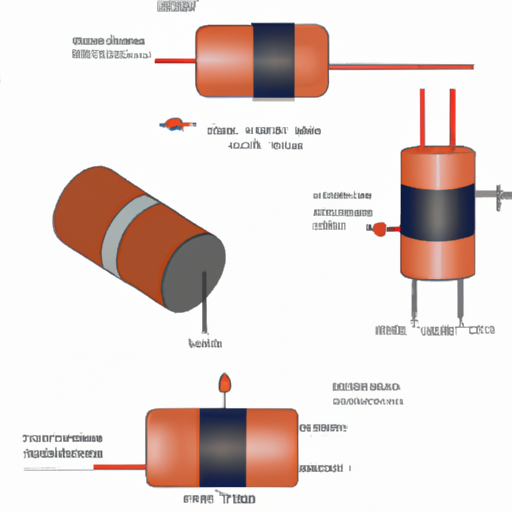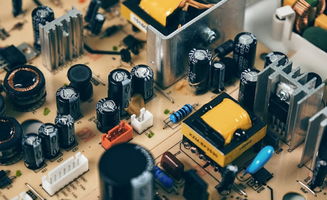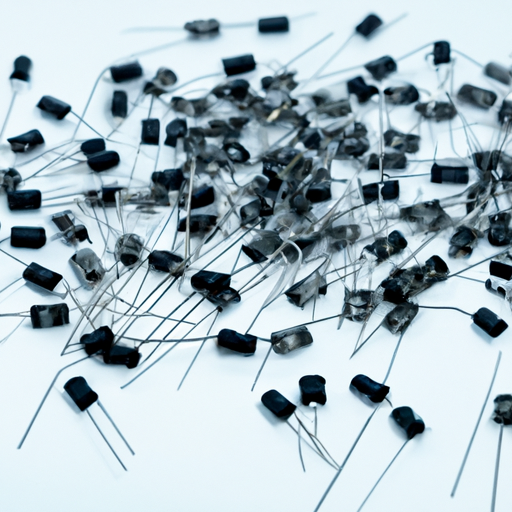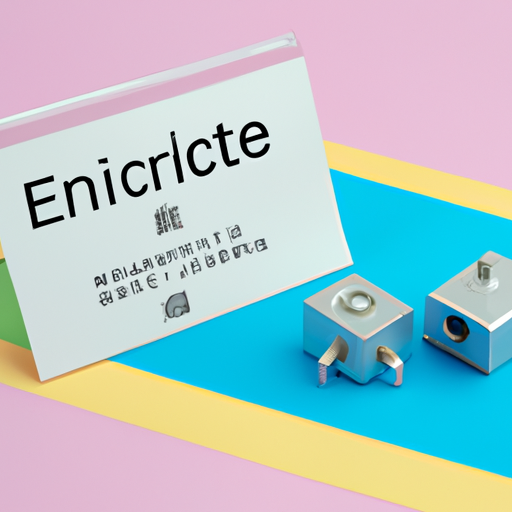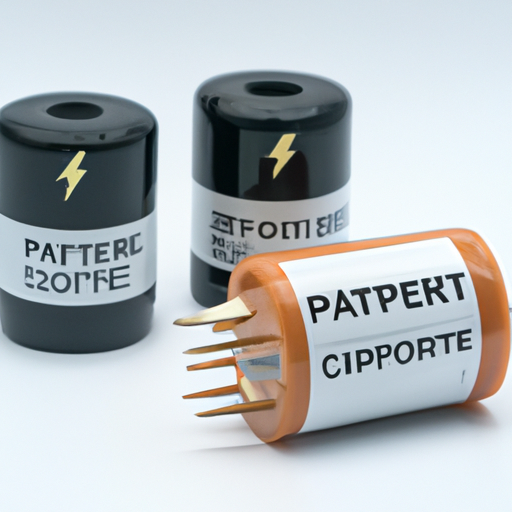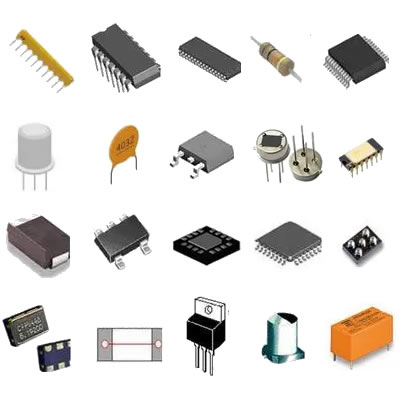An article will help you understand what an inductor is
An Article to Help You Understand What an Inductor Is
I. Introduction
Inductors are fundamental components in the world of electrical engineering and electronics. Defined as passive electrical devices that store energy in a magnetic field when electric current flows through them, inductors play a crucial role in various applications, from power supplies to radio frequency circuits. This article aims to provide a comprehensive understanding of inductors, exploring their historical background, basic principles, construction, applications, and future trends.
II. Historical Background
The concept of inductance dates back to the early 19th century, with significant contributions from pioneers like Michael Faraday and Joseph Henry. Faraday's experiments in electromagnetic induction laid the groundwork for understanding how changing magnetic fields can induce electric currents. Joseph Henry, often credited with the discovery of self-induction, demonstrated that a coil of wire could generate a current in itself when the current flowing through it changed.
As technology evolved, so did the design and application of inductors. The advent of radio technology in the early 20th century saw inductors being used in tuning circuits, while advancements in materials science led to the development of more efficient and compact inductors. Today, inductors are ubiquitous in modern electronics, from simple circuits to complex systems.
III. Basic Principles of Inductance
A. Definition of Inductance
Inductance is defined as the property of an electrical conductor that opposes a change in current. The unit of measurement for inductance is the Henry (H), named after Joseph Henry. One Henry is defined as the inductance of a circuit in which a change in current of one ampere per second induces an electromotive force of one volt.
B. The Relationship Between Current and Magnetic Fields
When an electric current flows through a conductor, it generates a magnetic field around it. The strength of this magnetic field is directly proportional to the amount of current flowing. In an inductor, this magnetic field is concentrated and stored, allowing the inductor to release energy back into the circuit when the current decreases.
C. Faraday's Law of Electromagnetic Induction
Faraday's Law states that a change in the magnetic field within a closed loop induces an electromotive force (EMF) in the wire. This principle is fundamental to the operation of inductors, as the changing magnetic field created by the current in the inductor induces a voltage that opposes the change in current.
D. Lenz's Law and Its Implications for Inductors
Lenz's Law complements Faraday's Law by stating that the direction of the induced EMF will always oppose the change in current that created it. This means that when the current through an inductor increases, the inductor generates a voltage that opposes this increase, and when the current decreases, it generates a voltage that opposes the decrease. This behavior is crucial for the stability and functionality of electrical circuits.
IV. Construction of an Inductor
A. Basic Components of an Inductor
An inductor typically consists of a coil of wire wound around a core material. The core can be made of various materials, including air, ferrite, or iron, each affecting the inductor's performance.
1. Core Materials
Air: Air-core inductors are simple and have low inductance values. They are often used in high-frequency applications.
Ferrite: Ferrite-core inductors are made from a ceramic material that enhances inductance and reduces losses, making them suitable for high-frequency applications.
Iron: Iron-core inductors provide high inductance and are commonly used in power applications.
2. Wire Types and Configurations
The wire used in inductors can vary in gauge and insulation type. Thicker wire can handle more current, while insulated wire prevents short circuits. The configuration of the wire winding also affects the inductance; tightly wound coils generally have higher inductance.
B. Types of Inductors
Inductors come in various types, each designed for specific applications:
1. Air-Core Inductors
These inductors use air as the core material and are typically used in high-frequency applications due to their low losses.
2. Iron-Core Inductors
Iron-core inductors are used in applications requiring high inductance and are often found in power supplies.
3. Ferrite-Core Inductors
Ferrite-core inductors are ideal for high-frequency applications, such as RF circuits, due to their low core losses.
4. Toroidal Inductors
Toroidal inductors have a doughnut-shaped core, which minimizes electromagnetic interference and is often used in power supplies and audio equipment.
C. Factors Affecting Inductance
Several factors influence the inductance of an inductor:
1. Number of Turns
The inductance increases with the number of turns in the coil. More turns create a stronger magnetic field.
2. Core Material
The type of core material significantly affects inductance. Materials with high magnetic permeability, like iron and ferrite, enhance inductance.
3. Geometry of the Inductor
The shape and size of the inductor also play a role in its inductance. Longer coils with larger diameters generally have higher inductance.
V. How Inductors Work
A. The Role of Inductors in Electrical Circuits
Inductors are used in various electrical circuits to store energy, filter signals, and manage current flow. They resist changes in current, making them essential for stabilizing circuits.
B. Inductive Reactance and Its Significance
Inductive reactance is the opposition that an inductor presents to alternating current (AC). It is frequency-dependent, increasing with higher frequencies. This property is crucial in designing filters and tuning circuits.
C. Energy Storage in Magnetic Fields
Inductors store energy in their magnetic fields when current flows through them. This stored energy can be released back into the circuit when the current decreases, providing a smoothing effect in power supplies.
D. Time Constant and Its Effect on Circuit Behavior
The time constant of an inductor, defined as the time it takes for the current to reach approximately 63% of its final value, is influenced by the inductance and resistance in the circuit. This time constant affects how quickly circuits respond to changes in current.
VI. Applications of Inductors
Inductors are versatile components used in various applications:
A. Power Supply Circuits
Inductors are essential in power supply circuits, where they help smooth out voltage fluctuations and store energy.
B. Filters (Low-Pass, High-Pass, Band-Pass)
Inductors are used in filter circuits to allow or block specific frequency ranges, making them crucial in audio and communication systems.
C. Transformers and Their Relationship with Inductors
Transformers, which consist of two inductors coupled through a magnetic field, are used to step up or step down voltage levels in power distribution.
D. Radio Frequency Applications
Inductors are vital in RF circuits, where they help tune and filter signals for communication devices.
E. Inductors in Audio Equipment
In audio equipment, inductors are used in crossover networks to direct specific frequency ranges to the appropriate speakers.
VII. Inductor Behavior in AC and DC Circuits
A. Differences in Behavior Between AC and DC
Inductors behave differently in AC and DC circuits. In DC circuits, inductors initially resist changes in current but eventually allow steady current to flow. In AC circuits, inductors continuously oppose changes in current, resulting in inductive reactance.
B. Impedance and Phase Shift in AC Circuits
In AC circuits, inductors introduce impedance, which affects the overall circuit behavior. They also cause a phase shift between voltage and current, with current lagging behind voltage.
C. Inductor Response to Changing Currents
Inductors respond to changing currents by generating an opposing voltage, which stabilizes the circuit and prevents sudden fluctuations.
VIII. Practical Considerations
A. Selecting the Right Inductor for a Project
When selecting an inductor, consider factors such as inductance value, current rating, core material, and application requirements.
B. Common Challenges and Troubleshooting Tips
Common challenges include overheating, saturation, and incorrect inductance values. Proper design and testing can help mitigate these issues.
C. Safety Considerations When Working with Inductors
Always follow safety guidelines when working with inductors, especially in high-power applications, to prevent electrical hazards.
IX. Future Trends in Inductor Technology
A. Advances in Materials and Design
Research into new materials and designs is leading to more efficient and compact inductors, enhancing performance in various applications.
B. The Impact of Miniaturization on Inductors
As electronic devices become smaller, the demand for miniaturized inductors is increasing, driving innovation in design and manufacturing.
C. Emerging Applications in Renewable Energy and Electric Vehicles
Inductors are playing a crucial role in renewable energy systems and electric vehicles, where efficient energy storage and management are essential.
X. Conclusion
Inductors are vital components in modern electronics, serving various functions in electrical circuits. Understanding their principles, construction, and applications is essential for anyone interested in electrical engineering and electronics. As technology continues to evolve, inductors will remain a key player in shaping the future of electrical systems. We encourage readers to explore further and deepen their understanding of this fascinating topic.
XI. References
For those interested in learning more about inductors and inductance, consider exploring the following resources:
- "The Art of Electronics" by Paul Horowitz and Winfield Hill
- "Electromagnetic Fields and Waves" by Paul Lorrain and Dale Corson
- Academic journals and articles on inductors and inductance in electrical engineering publications.
This article provides a comprehensive overview of inductors, their principles, construction, applications, and future trends, offering readers a solid foundation for further exploration in the field of electronics.

